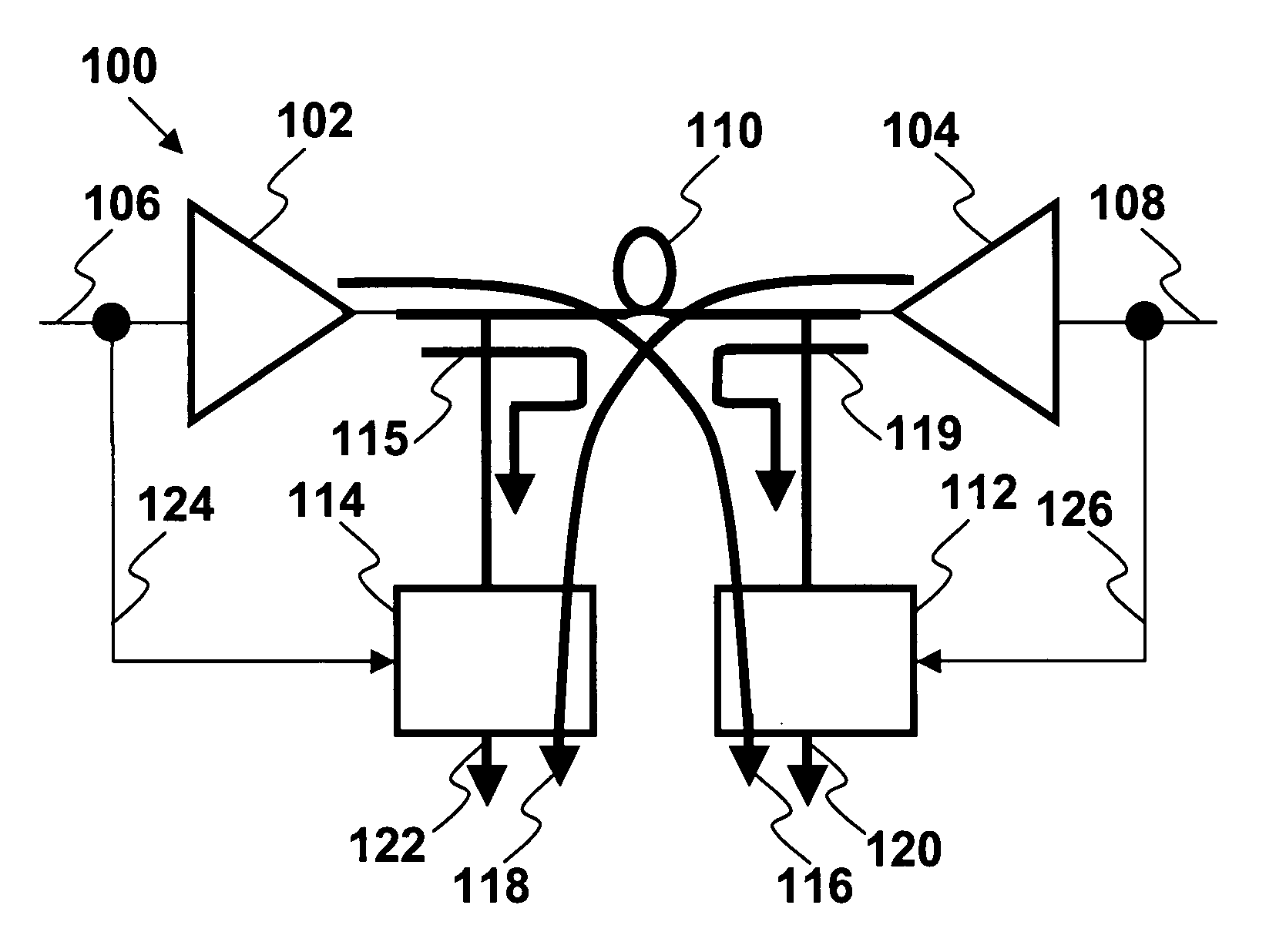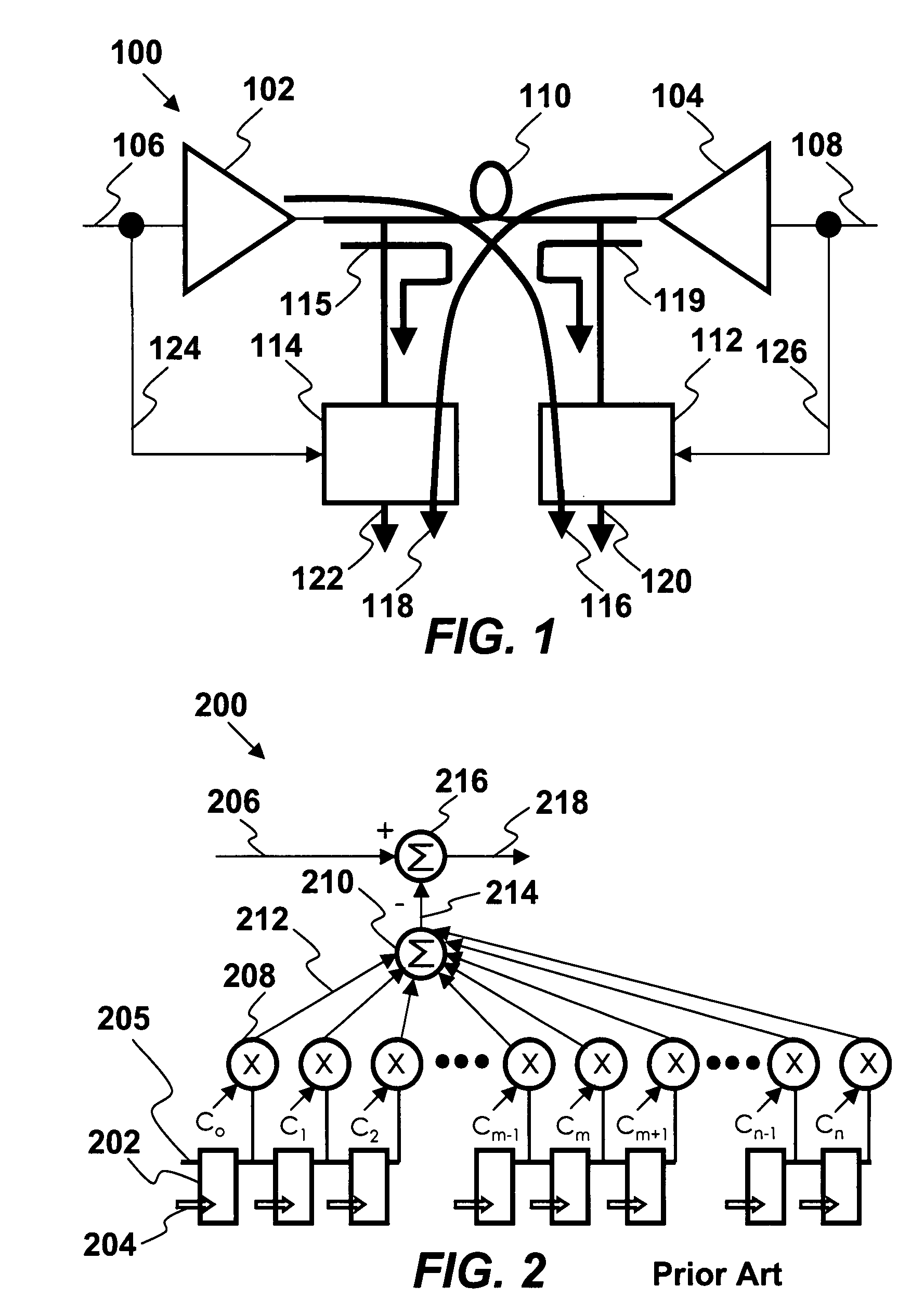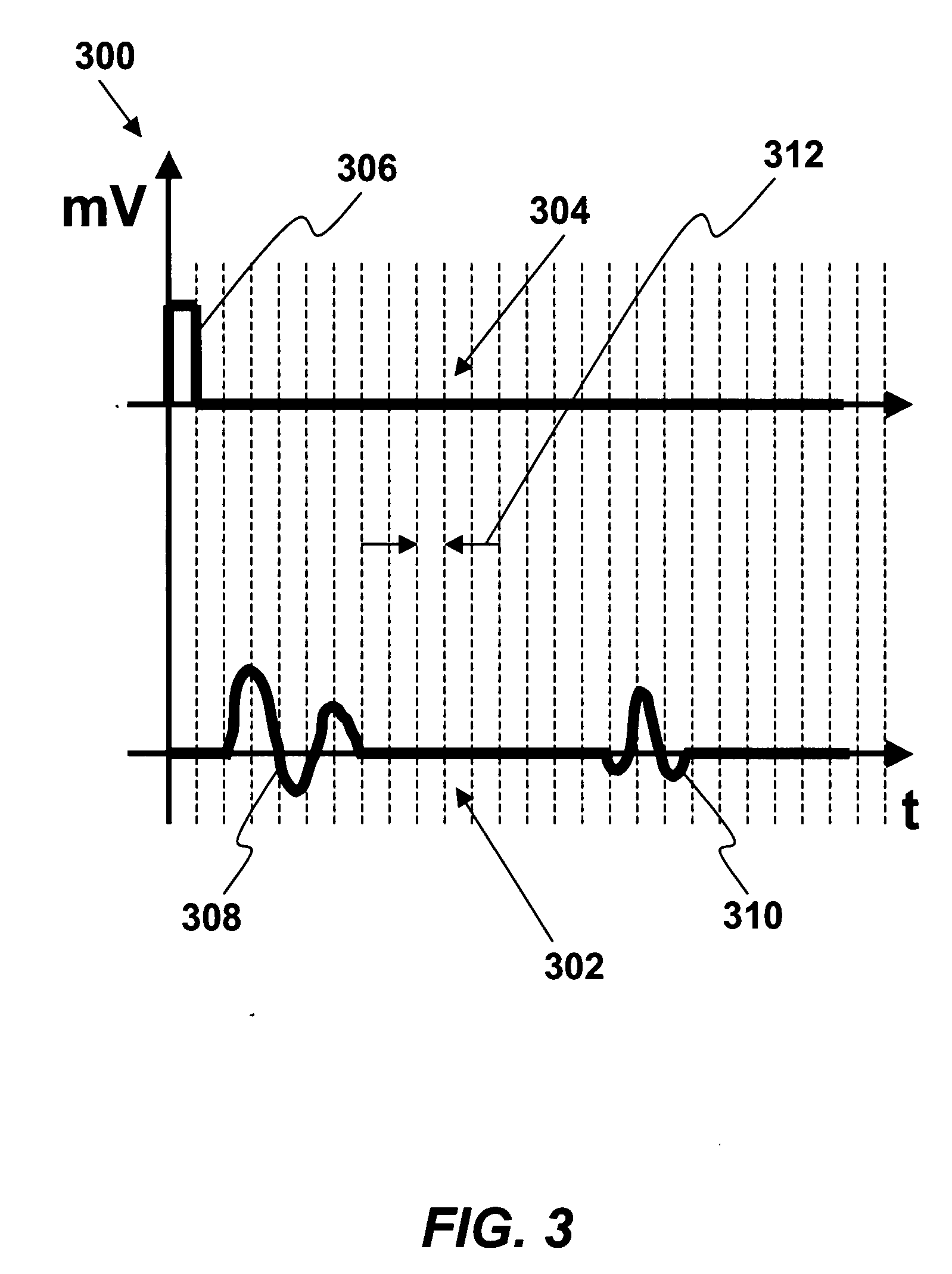Use of line characterization to configure physical layered devices
a physical layer device and characterization technology, applied in the field of networkworking, can solve the problems of long filter, underutilized, burdening the system, etc., and achieve the effect of optimizing filter performance, reducing a dynamic range in the filter, and reducing bits of precision in the filter
- Summary
- Abstract
- Description
- Claims
- Application Information
AI Technical Summary
Benefits of technology
Problems solved by technology
Method used
Image
Examples
Embodiment Construction
[0019]Although the following detailed description contains many specifics for the purposes of illustration, anyone of ordinary skill in the art will readily appreciate that many variations and alterations to the following exemplary details are within the scope of the invention. Accordingly, the following preferred embodiment of the invention is set forth without any loss of generality to, and without imposing limitations upon, the claimed invention.
[0020]By monitoring the characteristics of the channel, filters may be optimized to improve performance. The monitoring may be direct, in the form of time of frequency domain parameters, or indirect, by measuring the signal-to-noise ratio (SNR) of bit error rate (BER). Optimization of the filter may include reducing their required dynamic range, bits of precision, linearity or disabling them altogether. Further, limited filter resources may be reallocated to where they would be most useful, such as delaying finite impulse response (FIR) f...
PUM
 Login to View More
Login to View More Abstract
Description
Claims
Application Information
 Login to View More
Login to View More - R&D
- Intellectual Property
- Life Sciences
- Materials
- Tech Scout
- Unparalleled Data Quality
- Higher Quality Content
- 60% Fewer Hallucinations
Browse by: Latest US Patents, China's latest patents, Technical Efficacy Thesaurus, Application Domain, Technology Topic, Popular Technical Reports.
© 2025 PatSnap. All rights reserved.Legal|Privacy policy|Modern Slavery Act Transparency Statement|Sitemap|About US| Contact US: help@patsnap.com



